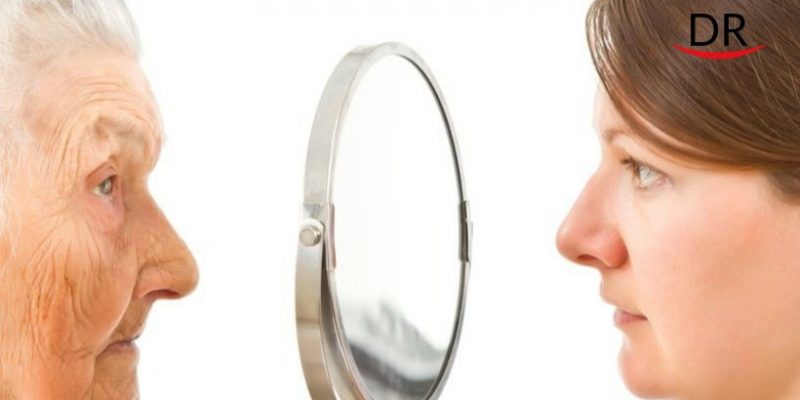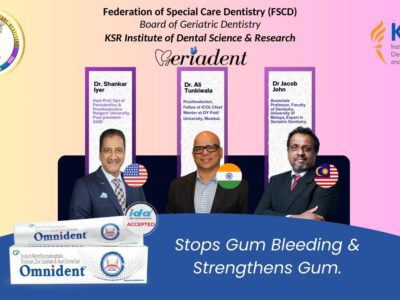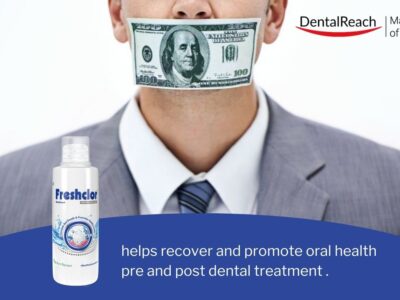Abstract
Aging is a dynamic process which involves the aging of soft tissue and bony structures. Facial aging shows changes in the shape, size, and volume of the soft tissues and bones of the face. Anti-Age dentistry focuses on soft tissue changes, particularly changes in the muscles, skin and loss of fat volume, the bony components of the face, the teeth and intra-oral soft tissues, which form the balance between the overall facial contour. As an anti age dental practitioner, it is paramount to have succinct knowledge with concerns regarding supervision, guidance, and correction of aging orofacial structures with dental rehabilitation.
Introduction
Aging is a natural inevitable process, every individual dreams to freeze this process and try and escape this phenomenon as much as possible. Recent development in anti-age dentistry have ensured that we can prolong the aging process or reduce the intensity of aging appearance.
Anti-Aging Dentistry consultation begins right from the time the patient walks into your practice, the consultant must analyse every aspect orofacial structure, not simply occlusion or the shade of the dentition. Simple prosthodontic correction procedures such as –
- Changing the size,
- Changing the shape or
- Changing the intrearch distance
of worn out dentition with
- crowns,
- veneers and
- implants
can easily
- smoothen wrinkles around the mouth,
- fill out the jaw line, or
- balance the appearance of smile
without undergoing temporary or permanent surgical procedures.
Anti-aging dentistry is often utilized as a way to cosmetically enhance the individual’s appearance and is rarely performed due to health concerns. Altering the appearance can be achieved by means of occlusal changes and or procedures such as whitening, full mouth rehabilitation with or without implants and prosthetic rehabilitation.
As a clinician, we are well aware of the chronological aging and the factors involved in aging process. Individual’s age is a primary risk factor for chronic diseases, mortality, and any impairments to systemic, functional or parafunction activities, sleep disorders as well as the neurological status . Thorough consideration and an understanding of patients nutritional, physical and psychological conditions along with systemic abnormalities and recognizing the oral implication and pharmacology of drug‐induced dental disease, contribute towards differentiating normal ageing and pathological ageing .
OSCAR – Criteria for dental assessment
When all pertinent clinical data is gathered, the clinician needs to work with the patient to establish the plan of care that best addresses the dental needs and the medical and functional limitations, given fiscal realities. Shay suggested a systematic approach to planning oral care for aging adults, which he called OSCAR and which he used to determine the needs of a specific patient.
The OSCAR scale is-
- O = ORAL, which evaluates the teeth, the prostheses, the periodontium, the status of the pulp, the oral mucosa, the occlusion, and saliva.
- S = SYSTEMIC, which evaluates normative age changes, medical diagnosis, pharmacological agents, and interdisciplinary communications.
- C = CAPABILITY, which evaluates functional ability such as self care, oral hygiene, caregivers, and the need for transportation and mobility.
- A = AUTONOMY, which evaluates the ability to give informed consent or dependence on others.
- R = REALITY, which evaluates prioritization of oral health care, financial limitations, and anticipated life span.
(Source: Modified from Shay K. Identifying the needs of the elderly dental patient. The geriatric dental assessment. Dent Clin North Am 1994;38:499‐523.)
A clinician must consider the following four important criteria during treatment planning and execution-
- FUNCTION – Relates to the ability to chew and eat an adequate diet.
- SYMPTOMATOLOGY – Relates to comfort while chewing and being free of pain by having an adequate amount of saliva to speak, taste, swallow, etc.
- PATHOLOGY – Relates to not having any oral discomfort or lesions in the mouth. AESTHETIC – Relates to perceived needs to improve their appearance or smile
Clinician must have succinct knowledge of understanding and management of orofacial pain conditions which can limit the individuals facial activity or change facial expressions or symmetry giving a fatigued or aged look . Some examples of this are-
- Temporo -Mandibular Disorders (TMD),
- oral motor disorders,
- myogenous pain,
- vascular pain,
- headaches,
- trigeminal neuralgia,
- trigeminal neuropathic disease,
- postherpetic neuralgia,
- burning mouth syndrome,
- occlusal dysesthesia and
- Obstructive Sleep Apnea (OSA) .
Balanced nutrition, weight management, facial physiotherapy, cognitive behavioural therapy and psychological wellbeing can add as adjunct to dental procedures to provide the individual a young look.
Limitations of Anti-Aging Dentistry
The main limitations of anti-aging dentistry are –
- The amount of change that can be made to the appearance of the patient in regards to soft tissue is limited. However, it will not provide the same results as fillers. Dermal fillers are also the option to use when patient needs structural contouring.
- Anti-aging dentistry is irreversible when it comes prosthetic rehabilitation
- Patient compliance and cooperation is the key factor in long term prognosis of the treatment plan.
Conclusion
A variety of oral changes may be observed in patients as they age. These changes can be attributed to a variety of physiological and pathological processes which have developed over a lifetime. Anti age dentistry requires the dentist to clinically recognise these changes and to develop planning strategies which take account of them. Emphasis must be placed on preventive regimes and treatment delivery which is sympathetic to the changing needs of our existing elders.
References
- Shay K. Identifying the needs of the elderly dental patient. The geriatric dental assessment. Dent Clin North Am 1994;38:499–523
- Berkey DB, Berg RG, Ettinger RL, Mersel A, Mann J. The old‐old dental patient: the challenge of clinical decision‐making. J Am Dent Assoc 1996;127:321–332.
- Clark GT, Minakuchi H, Lotaif AC. Orofacial pain and sensory disorders in the elderly. Dent Clin North Am. 2005 Apr;49(2):343-62. doi: 10.1016/j.cden.2004.10.011. PMID: 15755409.
- Gaspar LS, Álvaro AR, Moita J, Cavadas C. Obstructive Sleep Apnea and Hallmarks of Aging. Trends Mol Med. 2017 Aug;23(8):675-692. doi: 10.1016/j.molmed.2017.06.006. Epub 2017 Jul 21. PMID: 28739207.
- De Rossi SS, Slaughter YA. Oral changes in older patients: a clinician’s guide. Quintessence Int 2007; 38: 773–780




















Comments